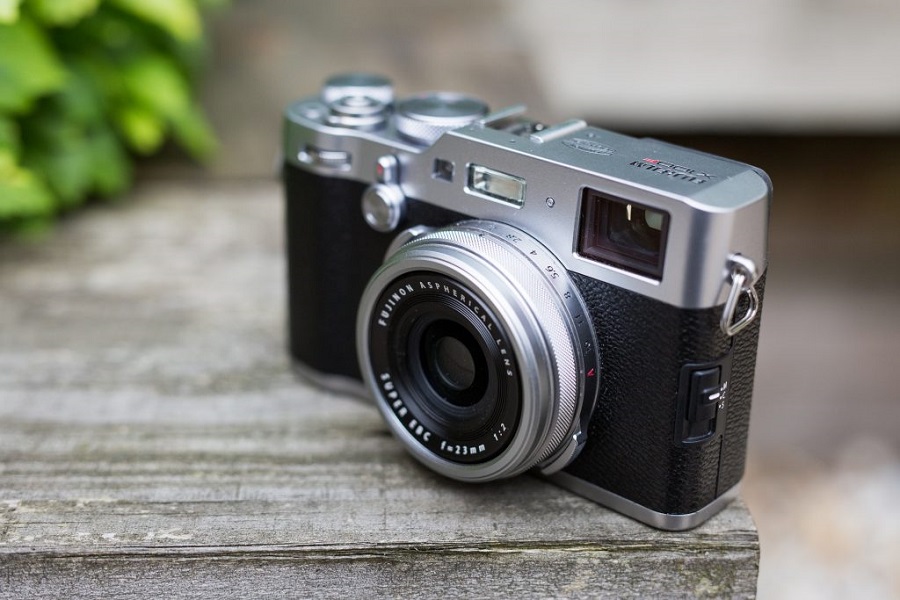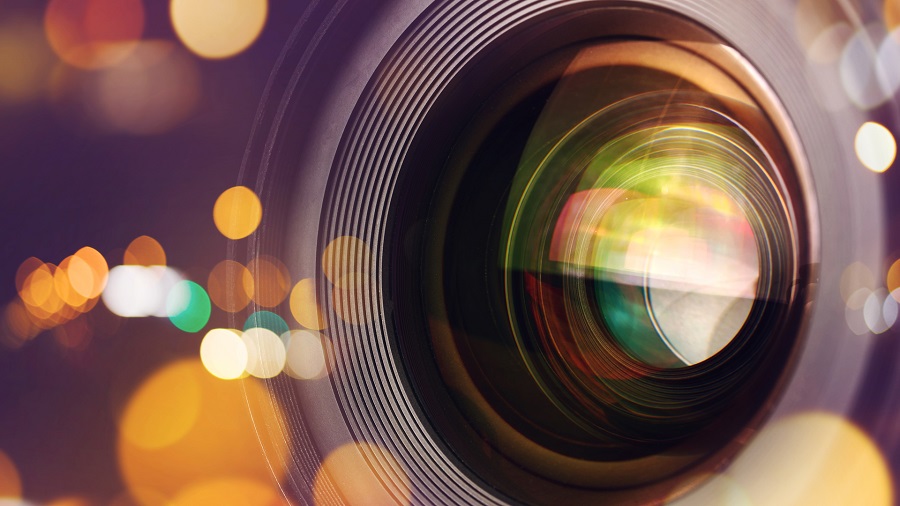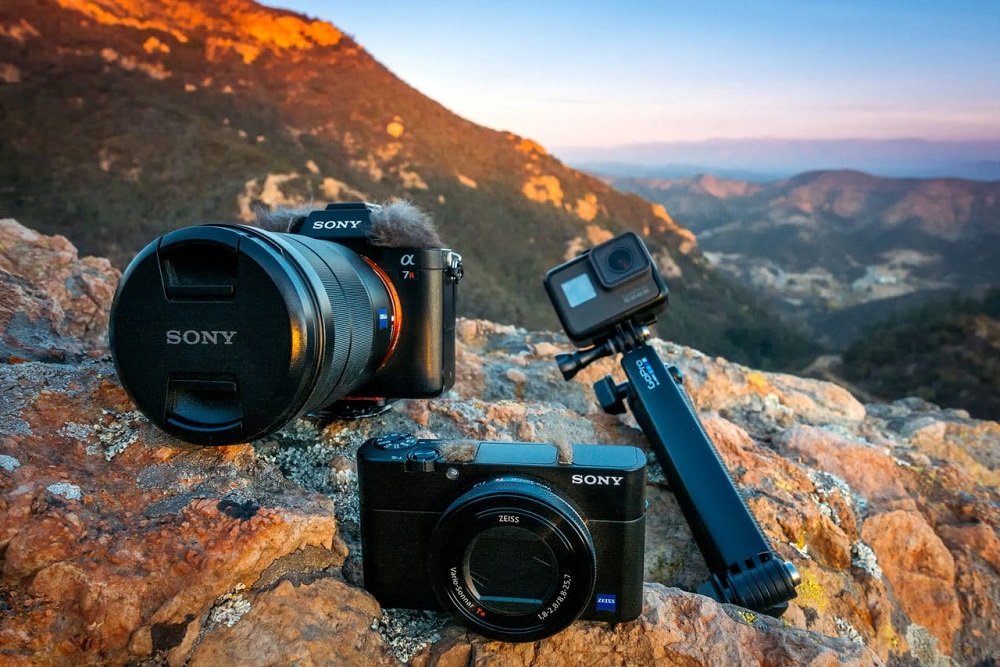Do you know how to choose and buy the best camera in 2018? What digital camera should you buy? What is the best camera? Should we buy a compact camera, professional SLR, DSLR, Bridge, EVIL, adventure camera, analog, super zoom …? Nikon, Canon, Sony, Fujifilm …? Buying a suitable camera for each one of us has never been an easy task. There are no good or bad cameras, but suitable cameras for every situation. In 2018 the manufacturers do not make it easy to choose the best model …
We will see all the types of cameras available in 2018 and some fundamental parts of their operation.
Tips for buying the best camera in 2018

- Try it before you buy it: you have to feel comfortable with it, have the controls you need, a sufficient grip, easy-to-use menus etc … and then check that your online price is cheaper than physical stores, and buy it from your home.
- Do not get obsessed with buying the best camera: No camera is “the best” in all sections (photo quality, performance, functionality, and design). Try to fit as much as possible to your needs.
- No specification will tell you which camera is the best: a better zoom or higher resolution is not indicative of one camera is better than another.
Digital cameras DSLR, EVIL or advanced compact?
A digital SLR or DSLR has a mirror that reflects the image of the lens, usually through a prism towards an optical viewfinder. An EVIL or CSC camera instead of having a mirror that reflects the light sends the image directly from the sensor to the viewfinder or to the rear LCD screen. Essentially it is the technology of a compact camera, but with the possibility of changing the lenses.

EVIL vs compact:
EVIL cameras are usually better than compact cameras because they have larger sensors. On the other hand, they are bigger and the lenses cost a lot of money.
EVIL vs DSLR:
If you need a good battery life or a good ignition speed, the DSLR models are more suitable. Low-end DSLRs are cheaper than EVIL cameras. By against the EVIL usually, have better video modes and can almost do the same things as the DSLR.
Key features in the best camera in 2018
Resolution
It is usually measured in megapixels (MP). This number indicates the number of pixels that the camera uses to produce an image. All cameras usually have enough MPs, but many of them do not have sufficiently powerful processors to deal with images.
Lens
There are two important characteristics in relation to the objectives: the aperture and the focal length.
The focal length of the lens, measured in millimeters (mm), tells us what is the magnification of the image and the amount of scene covered by the lens (the angle of view). As the focal length increases, things look bigger and take up more. A lens that covers multiple focal lengths is a zoom lens, and the zoom specification is the ratio of the longest focal length to the shortest one: a 20-100mm lens, therefore, has a 5x zoom.

- Ultra Wide Angle (less than 18mm) is good for capturing large scenes.
- Wide angle (around 18mm to 30mm) is good for landscape photos and street photography.
- Normal (about 30mm to 70mm) is good for portraits and snapshots.
- Telephoto lens (around 70mm to 300mm) is ideal for portraits or sports.
- Super telephoto (more than 300 mm) is good for sports or nature.
The aperture is the size of the aperture that lets light in and is referred to as number f. The smaller the number, the larger the opening. When in the specification it appears as 18-55mm f3.5-5.6, that means that the maximum aperture is f3.5 to 18mm and 55mm to f5.6. The wider openings let in more light and give you more control over the depth of field. A lens with a wide opening is known as fast and one with a narrow opening as slow. Fast lenses are considered better than slow lenses; “Fast” and “slow” have nothing to do with focusing performance.
This is something important to consider if you decide on the purchase of an EVIL camera (CSC) or a DSLR (SLR):
Do you know which system has the lenses that most interest you? Normally Canon and Nikon have behind a large baggage of lenses that you can use, but Sony is stepping very hard with their cameras without a mirror, and increasingly there are more lenses available for their cameras, both manufactured by themselves, and other manufacturers.
What if you have to be clear, is that once you get into a system, it is very difficult to get out of it … Are you going to waste all the goals you have bought for a certain system? Think carefully before buying a camera with these features.
Sensor size and type

With the size of the sensor, we refer to the dimensions of the photoreceptor matrix that create the pixels that become an image. Larger sensors generally produce better photo quality, but the larger the sensor the larger the camera; A larger sensor also requires a larger, more electronic lens. Larger sensors are also more expensive and increase the price of a best camera.
What sensor technologies can we find?
- CMOS is the most popular. A variant, BSI CMOS, is popular for compact cameras, as it allows greater sensitivity in low light over a relatively small part of the sensor.
- The cheapest compact cameras still use CCD sensors. Cheap CCDs do not offer as good image quality as the more expensive CMOS sensors, but on the contrary, more expensive CCDs than those used in medium format cameras produce better photos. In general, CCD sensors do not offer good video.
ISO sensitivity
The sensitivity of the camera to light is called ISO sensitivity; The higher the number, the better the camera will shoot in low light conditions. However, as the sensitivity increases, so does the amount of noise. As a result, few cameras are capable of using the highest ISO sensitivity. Rating ranges, making a reliable specification. For example, a camera that has up to ISO 6400 will probably produce decent images up to ISO 800.
Viewfinder
The most advanced best camera models still have viewers. They are useful when it is difficult to see the LCD screen with sunlight.

There are basically three types of viewers:
- Viewers that give you a direct view of the scene (TTL)
- EVF or electronic viewer
- TTL optical viewfinder in digital SLR.
EVFs have some advantage when recording video since you can see what you are recording simultaneously (with an optical viewfinder). On the other hand, optical viewers are better for recording action scenes, since an electronic viewer can only show the action once it has passed, not while it is in progress.
Important specifications? The coverage of the viewer in percentage or the amount of the scene can show: 100% is better, and effective enlargement, which tells us how big the image looks in the viewer. A good viewfinder will also have a diopter setting for those who wear glasses.
Image Stabilizer
Image stabilization prevents movement of the best camera. There are two types of optical image stabilizers :
- Located in the chamber
- Located on the lens
They work in a similar way, but those in the lens seem to work a little better during video shooting, but those in the camera are more comfortable when changing targets with or without a stabilizer.
Cheaper cameras have an electronic stabilizer, which uses a combination of fast shutter speed and higher ISO sensitivities to help adjust the movement. Unfortunately, this increases the noise of the image and is less effective in low lighting.
Drums
Most cameras use rechargeable lithium-ion batteries. They offer a longer battery life than AA batteries but are generally designed for a camera brand.
There are models that use AA batteries but are generally compact low-end and mega zoom cameras.
When buying a camera you have to check how many shots you can hold without having to recharge the battery.
The rate of continuous shooting

A measure of the number of images per second (FPS) is capable of capturing a camera. In optimal conditions, we want a high FPS, at maximum resolution, with automatic focus and automatic exposure. But companies often play with this value to make us believe that it is higher than it really is in a normal situation.
Video
To record good videos, the minimum we need is 1080 / 30p – “1080” refers to the resolution 1,920 × 1,080 pixels, also known as Full HD, while “30p” refers to 30fps. If a camera offers a frame rate higher than 60 fps, it will allow us to create videos in slow motion. If a camera has 4K video resolution, then much better, it is 4 times larger than Full HD.
As for codecs, the algorithms that compress and decompress the video, we will look for a codec such as H.264, AVCHD or XAVC, which are subsets of the MPEG-4, instead of Motion JPEG. The current video files have formats such as MOV, AVI, MP4, and MTS.
Video recording also has a bit rate, the amount of data you encode per second of the video: higher is generally better.
But if you want to record in spectacular video quality, you have to do it in 4K resolution. There are already relatively sweet cameras that record in this resolution, like the Sony a6300:
Camera modes

Non-professional photographers usually use Auto mode, where we let the camera calculate all the parameters of the photo. The professionals use the manual modes that allow us to control all the parameters of the shot. there are many available modes that vary or not certain parameters of the camera, as well as scene modes that vary from one manufacturer to another (sport, landscape, macro, portrait, panoramic etc …)
WIFI and GPS
It is increasingly requested that the best camera has WIFI to transfer our photos wirelessly to the smartphone, computer or tablet. If we also have built-in GPS, we can position our photos.
The downside to using these two features is that they consume a lot of battery power.

